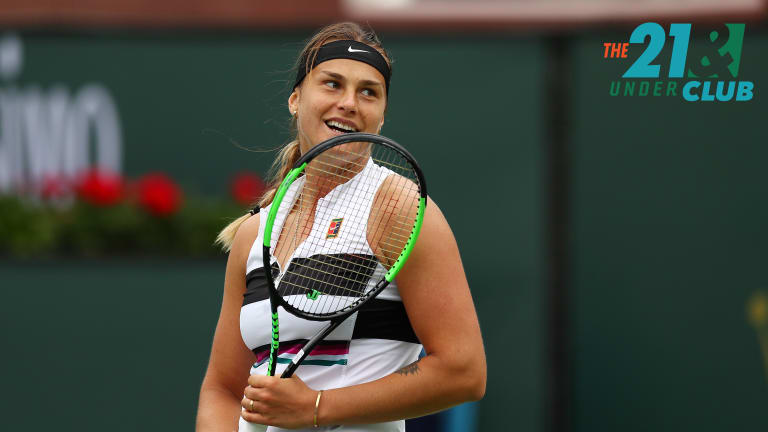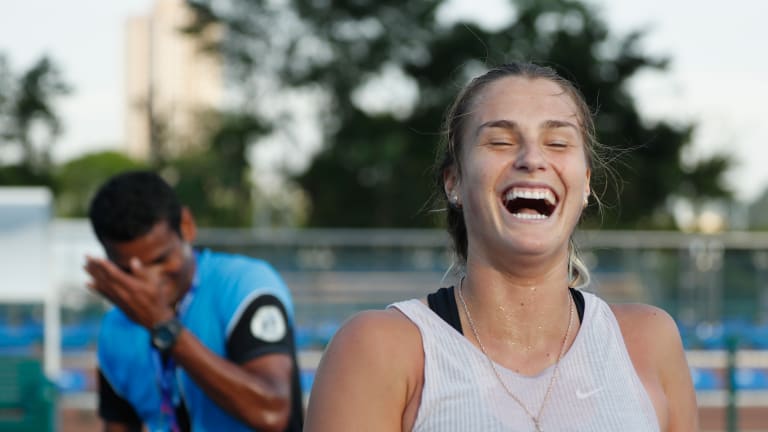How do you follow the Greatest Generation? It’s a question tennis has tried to answer for at least a decade. Serena, Roger, Novak, Rafa: all of them are over 30, and they’ve combined to win 75 Grand Slam singles titles—but none of them are going away quietly. When they do, who will fill their very large shoes?
As you’ll see in The 21 & Under Club, the future of tennis is still coming, and coming soon. While it may not produce a 20-Slam winner, it’s clear that the game will be in good hands. Interesting hands, too: one thing we know for sure is that this new generation of players will infuse the tours with a wide and refreshing range of styles, personalities and backgrounds. When the Greatest Generation says goodbye, we can feel good about welcoming this cast of players to the courts.
After prevailing in sweltering conditions on a side court at last year’s US Open, Aryna Sabalenka met with a handful of journalists in a nondescript corner of the tournament’s media center. The 20-year-old was running late for her interview, and she apologized for her tardiness.
When the interview began, it was as if Sabalenka was catching up with old friends. Unprompted, she told the gaggle where she was staying in Manhattan, and her review of the previous night’s dinner. She let us in on her upcoming shopping and sightseeing plans. Laughs were plentiful in this decidedly informal setting.
“I was like, what the f--- is going on?” Sabalenka casually dropped, referring to a framed lob from her opponent that caught the baseline.
When the chat was over, Sabalenka kindly asked one of the journalists where she should go to next—this experience was completely new to her. There were no handlers or tournament staffers shadowing her every move; it was pure Sabalenka.
Given tennis’ inverse relationship with off-court openness and on-court success, it’s likely that Sabalenka will be a little more guarded at this year’s US Open, and with a lot more attention surrounding her. By the time she exited last year’s Open in the fourth round—after defeating Petra Kvitova in straight sets and giving Naomi Osaka her most difficult test of the fortnight—she was fielding questions in much larger interview rooms, and navigating the winding halls of Arthur Ashe Stadium like a seasoned vet. But this unfiltered peek at the Belarusian, who many feel could be facing Osaka in Grand Slams semifinals and finals someday, is a reminder that Sabalenka’s expressiveness isn’t just limited to her game.
“Her presence is very, very visible from just the naked eye,” says four-time Grand Slam champion Jim Courier. “She’s a great mover, a tremendous athlete. She reminds me a lot of Victoria Azarenka, actually, in her style of play, her ability to track so many balls down, and her propensity to create a lot of easy power.”

